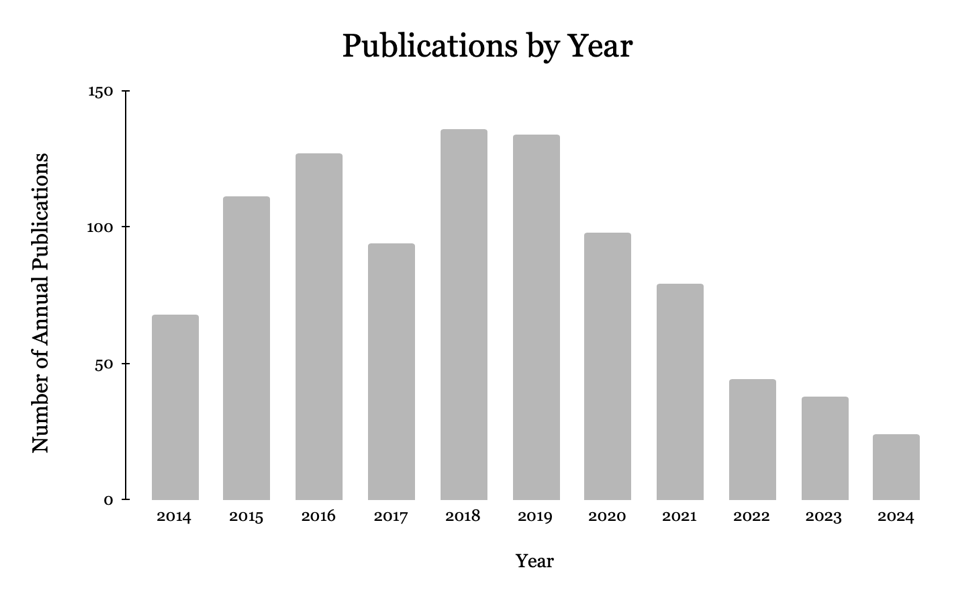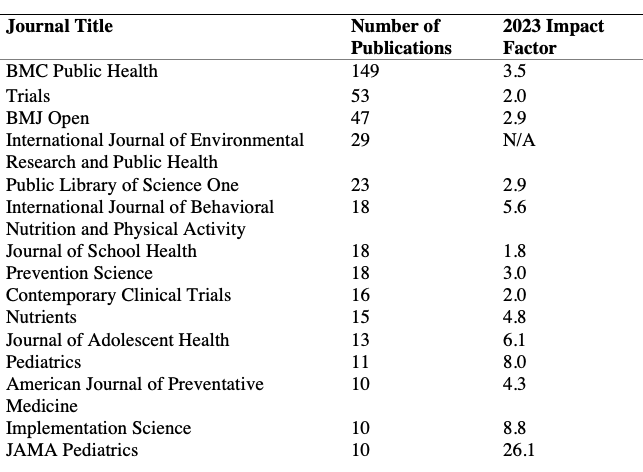General Pediatrics 3
Session: General Pediatrics 3
224 - Publishing Trends on the Topic of School Based Health From 2014 To 2024: A Bibliometric Analysis
Sunday, April 27, 2025
8:30am - 10:45am HST
Publication Number: 224.6358
Christina M. Hermann, Pennsylvania State University College of Medicine, Ambler, PA, United States; Robert P. Olympia, Pennsylvania State University College of Medicine, Hershey, PA, United States

Christina M. Hermann, BS
Medical Student
Pennsylvania State University College of Medicine
Ambler, Pennsylvania, United States
Presenting Author(s)
Background: School based health is essential for pediatric health, with school based programs and interventions proving significant improvement in pediatric health, academic, and behavioral outcomes.
Objective: This study aims to perform a bibliometric analysis on research published in school based health from 2014 to 2024, identifying trends in research topics and potential areas for future research.
Design/Methods: A comprehensive literature search was performed on PubMed, incorporating keywords “School Health Services” and “School Mental Health Services”. All relevant articles published from 2014 to 2024, filtered by age (child, adolescents), article type (clinical study), and article language (English), were included. Data points abstracted from each included article were journal, journal type, journal impact factor, year of publication, study population, study design, research topic, and outcomes. Trends in publication details, study details, and main topics were determined.
Results: Analysis of 953 publications from 117 journals revealed a peak in annual publications in 2018-2019, followed by a decline. Included articles were published in general scientific journals (30%), followed by public health journals (23%), psychology/behavioral health journals (10%), and pediatrics journals (8%). 9-13 year olds were the most studied population (50.9%). Clinically focused publications made up the majority (97%), and most interventions found positive outcomes on the studied population (60%). The most commonly assigned research topics were physical activity and nutrition (36%), health promotion/education (25%), mental health (19%), obesity (15%), substance use (12%), socioeconomic status (7%), violence (6%), home environment (5%), reproductive health (5%), and academic performance (4%).
Conclusion(s): Based on our sample, research in the field of school based health has evolved, but the overall number of publications has declined since 2019, possibly due to the COVID 19 pandemic. Still, data that has been published reveals that most school based health studies have positive outcomes on the health of our pediatric population, indicating potential for further studies to be performed. Less common research topics from our sample include violence, home environment, reproductive health, and academic performance. By describing current trends and given the promising results of many school based studies, we hope that clinicians and researchers continue to advance the field by producing high quality research regarding clinical applications of school based health findings in order to promote the health of our pediatric population.
Figure 1: Yearly Trends of School Based Health Publications in Our Sample

Table 1: Top Publishing Journals for Our Sample of School Based Health Studies


